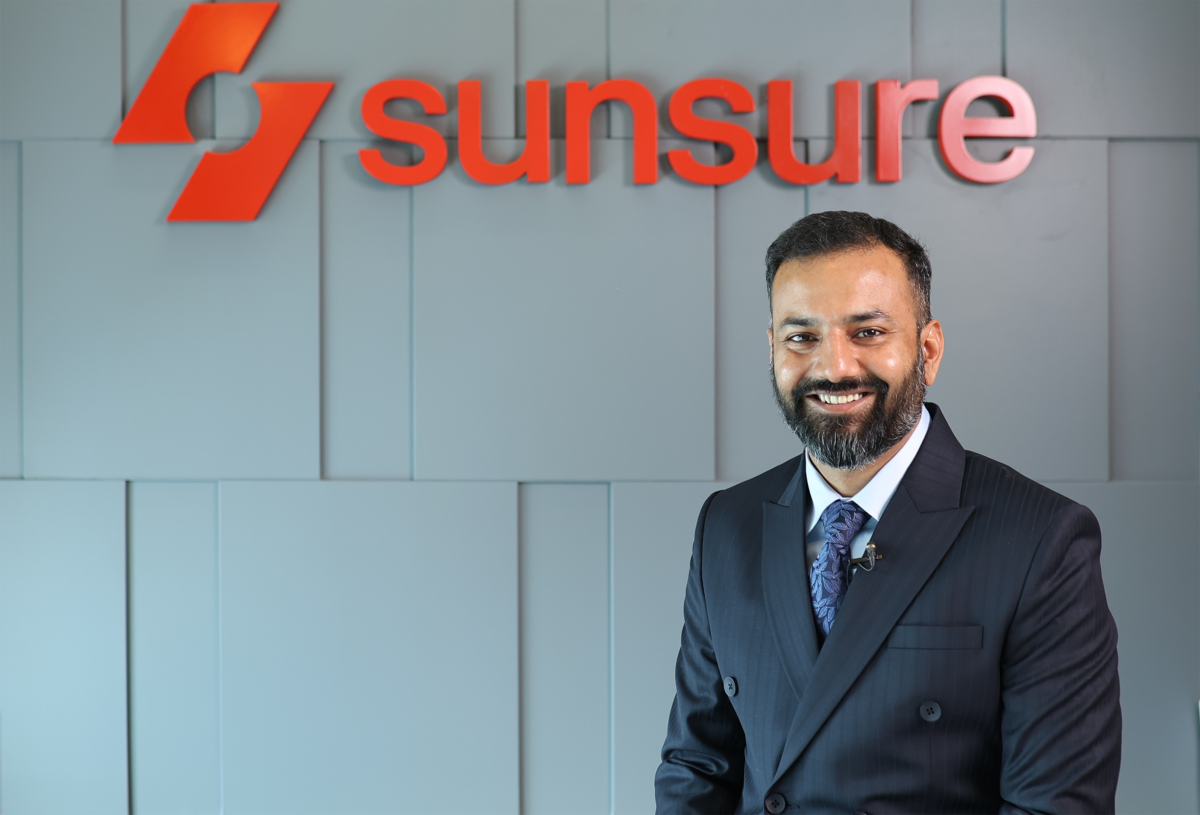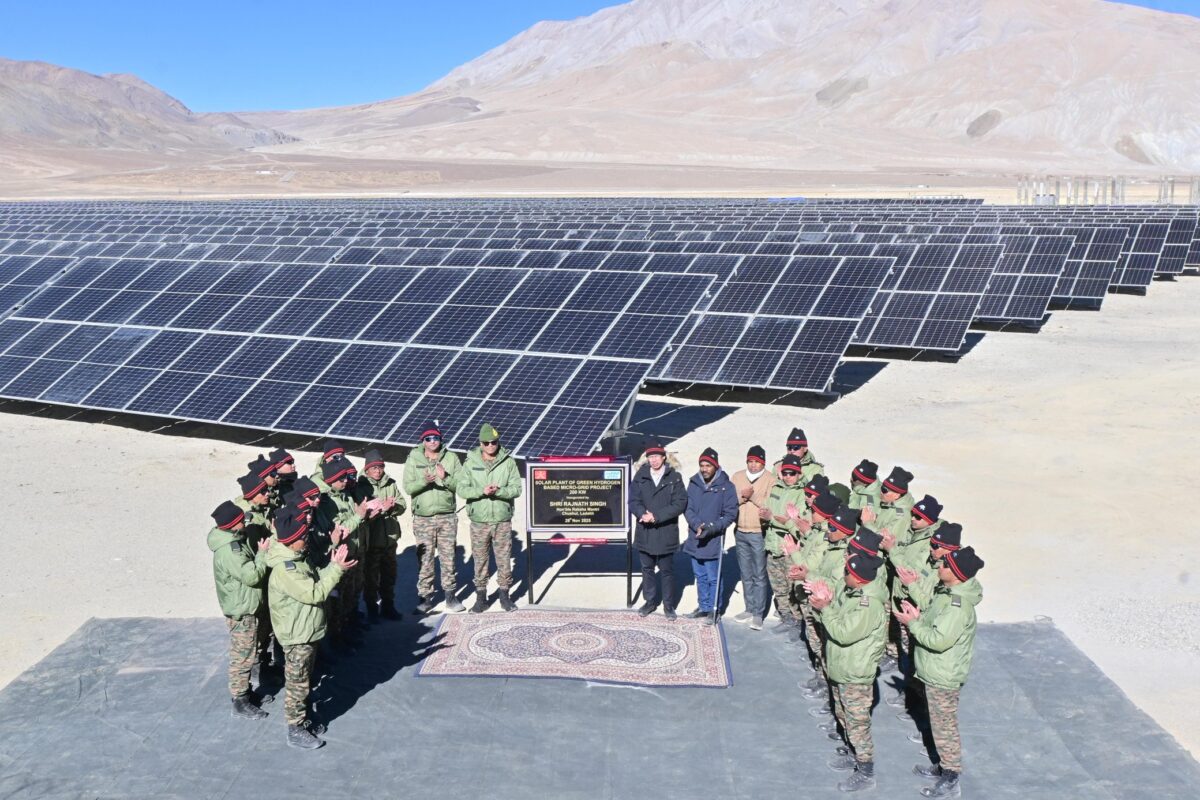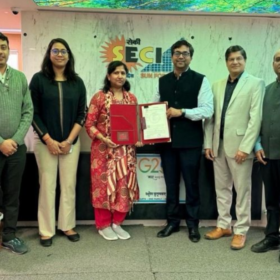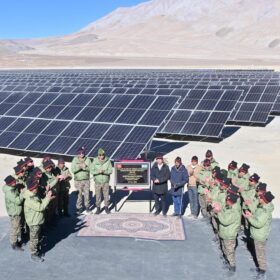pv magazine: How do you see the current landscape of energy transition in India?
Kartikeya Sharma: India’s energy transition seriously started in 2014 when we set for ourselves a bold target of 100 GW solar capacity by 2022—a fivefold increase from the National Solar Mission’s 20 GW goal. It was split into 60 GW from utility-scale ground mounted projects and 40 GW from rooftop solar. From there on, government’s push for renewables led to India crossing the 100 GW renewable energy mark in August 2021. That momentum in solar and wind capacity addition has continued till date, but not without certain challenges.
One major issue is grid stability, especially during peak summer months. Solar generation peaks between 10 a.m. and 2 p.m., leading to oversupply, and consequently a lot of solar curtailment in states like Maharashtra, Rajasthan, Gujarat, Tamil Nadu, and Andhra Pradesh. This contradicts the very spirit of India’s renewable energy policy which accords ‘must-run’ status to solar plants.
It is a wake-up call to everyone that as solar capacity grows, we would need commensurate cushioning. And battery storage is a mechanism to absorb this power and harness it.
The other problem is much more interesting. As the economic strength of our country grows, we’re seeing an increasing demand for premium products even in rural areas. Many more rural households now own refrigerators and washing machines. In all settings, rural or urban, around 4–5 p.m., there is a noticeable increase in electricity demand because people start returning home, while offices and industries are still operational, leading to a simultaneous rise in residential loads. So, you see a sudden spike in electricity demand, even as your key power source (solar) is ramping down.
The Indian Energy Exchange data shows that for over 250 days in a year, power prices during the period 6 p.m. to 12 a.m. consistently hit 10 rupees per unit (kWh) with demand almost two to three times higher than supply. And even at a bid of 10 rupees per unit, the bidders only get 30-40% of their energy demand fulfilled. This indicates a severe gap in power supply during that time.
The shortfall leads to load shedding, which typically starts with agriculture. Power supply to rural consumers is impacted next, followed by residential in urban areas, and then even industrial and commercial loads.
The peak power supply challenge is only intensifying. The demand during these specific hours is growing at about 8% year on year, compared to about 4% to 6% YoY growth in the overall power demand. During peak solar generation hours (10 a.m. to 2 p.m), the problem is inverted as supply exceeds the demand.
Battery storage solves both these problems at the same time by taking excess solar power generated in the day and supplying it during the evening time.
Is battery storage commercially viable now? Of late, there is a surge in storage tenders. How do you see the deployment over the next four to five years?
Thanks to the technological advancements and scaling up of battery manufacturing, especially in countries like China, battery prices have fallen by about 40% between 2023 and 2025. We are now at the tipping point where storing excess solar power produced during the daytime and releasing it in the evening peak hours is cheaper than buying power from the exchange at 10 rupees per unit.
According to the Indian Energy Storage Alliance, India tendered around 45 GWh of battery storage capacity in 2025 alone. Of this, around 22–25 GWh was for standalone battery energy storage systems (BESS), which should ideally become operational by June 2027. Currently, we’re at about 1 GWh, but at the current pace, I believe India will definitely cross the 100 GWh mark for standalone BESS by 2030. Additionally, solar-plus-BESS, FDRE [firm and dispatchable renewable energy], and other such projects will contribute another 50–60 GWh.
I expect 10 to 20 GWh of BESS installations every year from 2027 onwards, and these are very conservative estimates. We will most likely be doing better than this.
What are the current business models for BESS adoption in India
BESS adoption is primarily driven by standalone BESS utility-scale tenders issued by government agencies. Developers are required to set up four-hour battery storage systems and are paid a fixed fee under a battery energy storage purchase agreement (BESPA) lasting a duration of 12 to 15 years. These systems must meet specific technical criteria set by the government.
In these tenders, the government is responsible for supplying power to the battery and dispatching it as needed. For example, consider a DISCOM (distribution company) that has contracted a large amount of solar power. In such cases, the DISCOM may require a developer to install a BESS. Whenever there is excess solar generation, the DISCOM can schedule that surplus power to be stored in the developer’s battery system for later use.
After the success of these plain vanilla standalone BESS tenders, the government has come up with more complex tenders that mandate the developers to bring their own power (preferably renewable energy) and commit to fixed-duration discharge (typically four hours) in peak hours where the energy cost for DISCOMs is highest, thus reducing their overall power procurement cost.
Uttar Pradesh Power Corp. Ltd (UPPCL) has just recently floated such a tender. This is only the second tender of its kind in India. In fact, the first such tender was issued by NTPC, also on behalf of UPPCL, in which Sunsure emerged as the winner. We have already signed the Batter Energy Discharge Sale Agreement (BEDSA) with NTPC for this supply to UPPCL. Under the agreement, Sunsure will develop a 125 MW/500 MWh standalone BESS on a build–own–operate (BOO) basis in Jhansi, Uttar Pradesh, and supply power to UPPCL for a period of 15 years.
C&I customers are not typical users of standalone storage that utilities adopt to solve grid-level problems. However, these users are increasingly looking to solar-plus-storage solutions.
We’re already in advanced discussions with some large industrial clients who are looking at this offering very seriously. The key trigger for this demand is the recent changes in solar banking policies across states and as an organization, we want to reduce our dependence on banking.
Government tenders for BESS are typically technology-agnostic. How does this influence market direction?
The market has largely settled on lithium ferro phosphate (LFP) battery technology for short-duration storage (two to four hours) due to its unmatched round-trip efficiency, modularity, competitive price point, and the global scale of production. I don’t foresee any other technology rivaling LFP for short-term energy storage over the next five years.
For long-duration energy storage (at least 6 hours), lithium-ion is once again emerging as a highly viable alternative to the traditionally dominant pumped hydro storage. Aside from pumped storage, gravitational and other mechanical energy storage solutions are still in their early stages of development. The biggest challenge for these systems is achieving high efficiency.
Lithium-ion has already demonstrated almost 90% round-trip efficiency in a standalone system. In fact, tenders require a minimum efficiency of 85%. Pumped storage, I think, struggles to deliver beyond 75-77% of round-trip efficiency. The same issue persists with other mechanical energy storage solutions.
From India’s perspective, we are facing two problems: an oversupply of solar power during daytime and a limited supply of any kind of power during peak demand periods. I think battery storage is better suited to address these issues because they tend to occur in concentrated areas.
For instance, BSES has deployed a BESS project at Kilokari substation in Delhi, likely because it was potentially a congestion point.
To relieve grid congestion, utilities either need to lay more power transmission lines or upgrade transformer infrastructure, which is cost-intensive. Additionally, in a populous area, drawing power transmission lines is very difficult. So, it’s better to deploy a battery storage system so you can store the excess power during the low demand period and discharge it during peak hours in the evening.
Mechanical energy storage certainly solves the long-duration energy storage problem. However, given the difficulty in developing these kinds of assets, the limited technology proliferation, and the immediate need being urban centers suffering load shedding, I feel LFP based BESS technology is going to dominate the market in the near term.
[That said] LFP has limitations beyond a certain point. For instance, at present, it is not very well suited for storage beyond four hours. However, I believe that within the next two years, LFP will become viable for six-hour storage requirements with the narrowing of the price gap between four-hour and six-hour systems. Breaching the eight-hour level, however, is going to be difficult.Is India on track in BESS manufacturing?
We have caught up on solar production. I don’t think it’s going to be an issue over the next three to four years. By 2030, we’ll be self-sufficient—in fact, depending on how the policies and macro factors plays out, we might be one of the largest exporters as well.
Moving on the lines of Atmanirbhar Bharat, the government has put in a lot of effort to promote domestic manufacturing and purchasing solar components including module, cells, and now wafers. Due to government’s consistent efforts, solar manufacturing in India has caught up with the demand with the government itself choosing Indian manufacturers for utility projects. If the same playbook is adopted for BESS, India can become self-sufficient in BESS technologies and components.
And my view is that while it took us around 15 years to scale up in solar manufacturing, we could do the same in BESS in a comparatively shorter period of five to seven years.
What are your plans for the BESS market?
At Sunsure, our core belief is that India must become energy independent to power our billion plus dreams— a higher vision that continues to guide the company. We centered on industries as being the key driver for India’s growth and focused on energy independence for this sector.
True energy independence means surety of power supply, price certainty of the power supply over the long term, and the quality of power used in production. Today, if you want to remain globally relevant, developed countries ask you to develop or produce using green power.
We started with solving these three challenges for the C&I segment in India. On the way, we realized that even utilities need to address similar set of problems.
Today, in the C&I segment, we are largely offering round-the-clock renewable energy solutions. For example, in Uttar Pradesh, we are deploying solar plus battery storage projects as there is no wind resource. In states like Tamil Nadu, Maharashtra, and Rajasthan, our solutions are solar plus battery storage plus wind to deliver RTC power.
To create true round-the-clock power solutions, you end up relying heavily on wind power instead of solar power, and wind is much more difficult to deploy, much more unpredictable, and much more expensive than solar. So, with battery storage now becoming cheaper, our solutions have started seeing a much higher percentage of battery storage, with wind being a minor component. And that has made our offerings much more competitive, more predictable. This is how battery storage has become an integral part of our offering.
On the utility side also, we are heavily focused on building complex renewable energy solutions, which again require a lot of battery storage. We also focus on standalone storage projects to solve the peak power demand challenge.
In fact, standalone storage is a strategic asset for us. In complex energy setups, you will have some excess solar sometimes. If you look at typical (Firm and Dispatchable Renewable Energy) FDRE tenders, developers build excess solar capacity to meet the dispatch criteria and that excess solar is sometimes sold on the exchange. When we have a standalone storage system, instead of selling the excess solar power on the exchange, we’ll actually be able to store that power into our batteries.
We are looking at creating an integrated network of renewable energy assets across the country which will actually interact with each other. This will minimize the impact of RE intermittence on the grid while benefiting our customers by providing them power when they need it the most.
Do you see utility-scale overtaking C&I as Sunsure’s strategic focus?
We want to create a very healthy mix of C&I and utility-scale projects because both have their own advantages. Utility projects give us scale and longer timelines to develop projects, whereas C&I projects deliver very good returns on investment. In the C&I segment, we have created a niche for ourselves by being able to supply power very quickly—on an average, within about 120-140 days (4 to 4.5 months) from PPA signing. Whereas, for utility projects, the commissioning period is 18 to 24 months.
As of today, we have commissioned about 600 MW of solar projects. The next 1.5 GW that we are constructing consists of 1 GW utility scale and another 500 MWs of C&I projects which would comprise of solar, wind and BESS technologies. Overall, this adds up to 2.1 GW of operational and under-construction projects consisting of a healthy mix of utility and C&I projects.
This content is protected by copyright and may not be reused. If you want to cooperate with us and would like to reuse some of our content, please contact: editors@pv-magazine.com.









1 comment
By submitting this form you agree to pv magazine using your data for the purposes of publishing your comment.
Your personal data will only be disclosed or otherwise transmitted to third parties for the purposes of spam filtering or if this is necessary for technical maintenance of the website. Any other transfer to third parties will not take place unless this is justified on the basis of applicable data protection regulations or if pv magazine is legally obliged to do so.
You may revoke this consent at any time with effect for the future, in which case your personal data will be deleted immediately. Otherwise, your data will be deleted if pv magazine has processed your request or the purpose of data storage is fulfilled.
Further information on data privacy can be found in our Data Protection Policy.